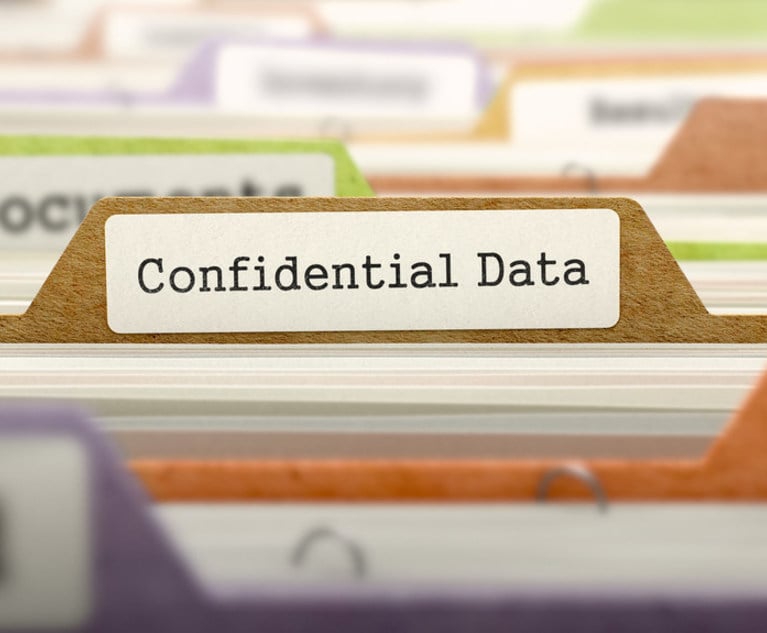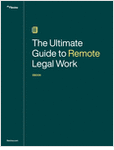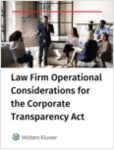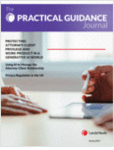Note: This article was published on March 3, 2020. Guidance from government public health and safety authorities including the U.S. Department of Health and Human Services, the Centers for Disease Control and Prevention and the U.S. Department of Labor’s Occupational Safety and Health Administration, as well as from state government health departments, has been updated since then. Please refer to their websites for the latest guidance.
In-house counsel and their employers should prepare now for potential workplace disruptions in the United States from COVID-19, the novel coronavirus that was first reported in China, employment lawyers and a corporate counsel said.
As of March 3, there were several dozen confirmed COVID-19 cases in the U.S., the first cases of community spread in the states had appeared in Washington state, Oregon and California, with six deaths of high-risk patients reported Monday, according to the U.S. Centers for Disease Control and Prevention. The CDC said it expected to find more cases as testing expands. At least 10 states had reported confirmed and presumptive cases. COVID-19 is the disease caused by a specific virus SARS-CoV-2 whose flu-like symptoms range from mild to severe.
Public health officials said the public should prepare for some “significant disruption” from the novel coronavirus and take reasonable precautions against COVID-19.
Some large employers and big law firms already have suspended travel for nonessential meetings and conferences. So what further steps can U.S. employers and their in-house take now to prepare to minimize legal or financial exposure here?
Employers and their counsel need to develop business continuity plans similar to those for natural disasters such as hurricanes and other major disruptions, lawyers said.
 Elisabeth Belmont.
Elisabeth Belmont.
Elisabeth Belmont, corporate counsel at MaineHealth in Portland, Maine, the largest health care organization in the state, which also serves part of northern New Hampshire, said “a coronavirus outbreak or pandemic will present a plethora of business and legal issues which often are intertwined.”
“In-house counsel can be helpful in separating business issues from legal issues and identifying approaches to each one in a manner that mitigates both business and legal risk,” she said in an email exchange.
Nancy Inesta, a labor and employment litigator at Baker & Hostetler in Los Angeles, and chair of a firm task force on COVID-19 said, “I have back-to-back client calls today for dealing with this issue. Employers want to know what to do.”
She added, ”Employers have to work within current laws that may not necessarily give them unfettered flexibility to do what they would like to do, such as ask medical questions.”
 Nancy Inesta.
Nancy Inesta.
Agencies including the Equal Employment Opportunity Commission issued guidelines for employers on how to prepare for a pandemic in advance of the H1N1 flu pandemic in 2009, which still offers some useful suggestions, Inesta said.
Howard Mavity, a partner at Fisher & Phillips in Atlanta and founder and former co-chair of the firm’s workplace safety and catastrophe management group, said businesses are only now getting serious about looking at the broader issues of continuity and planning for disruption.
In particular, he said, employers need to decide what policies they will establish to handle absences caused not only by actual illnesses but by measures that public officials might take, such as shutting down schools, as happened last week in Japan. Closing public schools or public transportation could cause large numbers of employees to call out, even if they are not ill themselves.
“If 50% of your workforce is forced to take a week or two weeks of their time, you will have a huge unfunded expense. I am telling clients you need to sit and calculate this out, because it could put you in the red. Can you insure any of it? Or fund any of it? That’s not something most employers have thought out,” Mavity said.
“And how they are going to handle requests for time off and leave? Because normally people would have used up their available time, and what are you going to do? Are you going to do a one-time relaxation of absenteeism and tardiness? You have to think that out. Also, you have to get really serious about office hygiene and the first issue is really bringing home to [urging] employees, to stay home if you are sick.”
In-house counsel may also need to help employers craft policies around the use of personal protective equipment such as face masks or what to do if employees—or their relatives—are returning to the workplace from an outbreak area, or if they decide to travel to one.
Here are some questions and answers for in-house counsel planning for this contingency with executives, although the lawyers agreed that there are many questions that would have to be dealt with on a case-by-case basis:
Q: Can an employer legally require an employee to leave work or stay home, even if they don’t provide sick pay?
A: Generally, yes. CDC Employer Guidance issued earlier in February “says to immediately separate them from employees and send them home and don’t leave them in the workspace but get them out of the door as fast as possible. That is standard guidance for regular season influenza and the employer is unlikely to occur legal risk for sending them home,” Mavity said.
[Seasonal flu, for which there are vaccines, causes 12,000 to 61,000 deaths in the U.S. alone per year, according to Johns Hopkins Medicine.]
The CDC guidance encourages employers to keep workers home until they are free of fever, 100.4° F or above, and any other symptoms for at least 24 hours. The CDC also recommends that employees who come to work with respiratory symptoms such as a cough and shortness of breath or who become sick during the day be separated from the other workers and sent home immediately.
Inesta cautions that this applies if the employer perceives a “direct threat” in the workplace under the Americans with Disabilities Act, so employers should check with counsel if unsure of the situation. Employers will have more leeway if a pandemic is declared by health authorities, she said.
But the employer shouldn’t tell others why an employee was sent home. “It is generally better to not run the risk of violating common law privacy protections, the Americans with Disabilities Act, or other privacy laws by saying, we sent Joseph home because of X,” Mavity said.
“If public health says you should alert other workers, the better thing is to say, ‘If you were working in the accounting area [for example] on Monday on the fourth floor between 8 and 10 a.m., you may have been exposed,’ and tell them to consult with their own medical providers, so they can stay alert if they start having symptoms.”
Q: What about pay policies for those who must take leave for illness?
A: Mavity said, “in cities and states that don’t mandate sick pay or sick time, my first question is, ‘What are your existing policies on paid time off?’ Even in employer-friendly states, those policies may be enforceable as some sort of contract, and in many states they are treated as a contract. They have to adhere to and follow those policies and if they don’t, it is more typically in those states going to be a breach-of-contract issue. It could be a serious risk.” He also added to be wary in states like California that “have a bunch of derivative claims about wage payment.”
Q: Can an employer force an employee who has traveled to an high-high-risk outbreak country, or who has a relative who has but isn’t sick, to stay home?
A: Inesta said: “They can, but only after they make the assessment that a person is a ‘direct threat.’ They still have to do the assessment, and it has to be based on something. They are going to have to go through the steps required under the ADA policies and nondiscrimination statutes in every state. They have to follow federal and state disability and discrimination laws unless it is declared a pandemic and then employers would have more leeway in what they are able to do.”
She continued: “A very important concept is the concept of ‘direct threat’ under the ADA. If you want to take action and get someone to stay home or come to work, you have to make an assessment of whether the employee poses a direct threat to himself or others that can’t be eliminated to other individuals. The problem is that ‘direct threat’ is not irrational fears. ‘Direct threat is reserved for pandemic situation which we do not yet see.
Mavity said that, if the travel involved a country that is currently on high alert, however, it probably would not be difficult to make a direct threat showing in order to require them to self-quarantine for a number of days.
Q: What can an employer do when the worker calls in and says that they were advised o stay home for 14 days to watch for symptoms because they might have been exposed in travel or otherwise?
A: Inesta said a quarantine that is not tied to any actual illness of a person or his or her family is not considered a Family Medical Leave Act-qualified absence.
If the employee or family member is ill, however, that potentially could be covered under the ADA as a disability or the Family and Medical Leave Act. Inesta said an employer should seek advice from outside counsel, if they intend to deny leave under these circumstances.
Employers should consider being more flexible with paid time off policies and remote work policies to cover these types of situations, Mavity and Inesta said.
CDC employer guidance also encourages flexibility and nonpunitive sick leave policies, including for contract workers. The CDC also urged employers not to require a health care provider’s note to validate their condition for employees who are sick with acute respiratory illness.
“I would advise employers right now to follow procedures to be sure that they are creative and generous with their leave policies,” Inesta said. But in doing so, “document it so that you don’t make a new standard” and create the possibility of claims of disparate treatment later.
Q: Does an employer have the legal right to question an employee about whether they have traveled to an outbreak area or if they were exposed to anyone infectious and do they have symptoms?
A: Mavity said that asking someone is consistent with business necessity. “If you just came from Italy and were you exposed, and you have any of the symptoms listed, fever, runny nose or cough, that is a business necessity question and would pass muster. You don’t want to ask, are you pregnant, or do you have a condition that would make you more susceptible? I would not ask that,” he said.
Inesta said: “You still have to abide by the ADA and discrimination laws. You do have some rights. A very important concept is the concept of ‘direct threat’ under the ADA. If you want to take action and get someone to stay home, or come to work, you have to make an assessment of whether the employee poses a direct threat to himself or others that can’t be eliminated to other individuals. The problem is that ‘direct threat’ is not irrational fears. ‘Direct threat‘ is reserved for pandemic situation which we do not yet see.”
As for an employer forbidding a worker to travel to an outbreak area, Inesta said that, during the Ebola outbreak in Africa in 2014, at least one federal court dismissed a discrimination complaint by an employee who claimed discrimination under the ADA after being fired for traveling to Africa against an employer’s orders. The court says she wasn’t engaged in protected activity.
In situations like these, it is advisable to seek specific guidance from higher-level corporate counsel or outside counsel to analyze the situation, Inesta said.
Q: What does an employer have to consider if a public health authority decides to close schools or transportation?
A: An employer can terminate someone for an unapproved absence, but if there are mass closings, they are not going to be able to fire people if 25% of workers can’t come to work, Mavity said.
They may have to carve out one-time exceptions because of unique circumstances and allow additional one-time paid leave, and they have to specify that so there is no new policy created.
Some states, such as California, actually mandate leave for school activities, which appears to include school closures, Inesta said.
Mavity said, “Paid time off is unfunded, so if 40% or 50% use it, that could be a staggering debt to be paid out of revenues. During the SARS [epidemic] there were insurance vehicles that might cover some of that unfunded liability,”
The EEOC provides an ADA-compliant prepandemic employee survey with four questions requiring a single, simple yes or no response as a way for employers to gauge which employees might not be available to work in pandemic so they can plan ahead, Inesta pointed out. The circumvents having to ask medical questions directly. The four questions on the survey are:
- If schools or day care centers were closed, would you need to care for a child?
- If other services were unavailable, would you need to care for other dependents?
- If public transport were sporadic or unavailable, would you be unable to travel to work?
- If you or a member of your household fall into one of the categories identified by the CDC as being at high risk for serious complications from the pandemic influenza virus, would you be advised by public health authorities not to come to work? For example, this may affect pregnant women; persons with compromised immune systems due to cancer, HIV, history of organ transplant or other medical conditions; persons less than 65 years of age with underlying chronic conditions; or persons over 65.
Q: Can an employer forbid an employee to wear a surgical mask at work or require one to be worn?
A: Masks are used on patients who are suspected of having a transmissible disease primarily to keep them from spreading it to others through coughing and sneezing. Medical personnel use masks and respirators to protect their patients and themselves from transmission.
“Wearing a face mask is more for people already showing symptoms of coronavirus and their caregivers than for individuals trying to prevent the disease,” Belmont said.
The U.S. Surgeon General on Saturday urged the general public to stop buying face masks, emphasizing that they are not recommended for general use as a preventive measure and that panic buying was creating shortages for health care workers.
Belmont said, “Experts caution that using a face mask without proper fitting and training could actually increase your risk. The CDC recommends that health care workers wear a specific type of mask called a NIOSH-approved N-95 respirator, and not a surgical mask. Unlike NIOSH-approved N95s, face masks are loose-fitting and provide only barrier protection against droplets, including large respiratory particles.”
Mavity said he is fielding questions from retailers, customer service and hospitality companies who don’t want their employees wearing surgical or other masks because they feel it will be off-putting to customers or clash with the upscale environment they are trying to maintain. He said, “We already seeing a run on every type of mask, and small contractors can’t get the masks they need for painting and sanding.”
If an employer prohibits wearing a face mask and an employee files a retaliation claim under the Occupational Safety and Health Act saying that the employee refused to do an unsafe task, Mavity said OSHA would look at the reasonableness of the claim, but if public health organizations say wearing a mask isn’t useful, the employee probably would lose on the claim.
“So there is legally a fair amount of right for an employer to say no, you can’t wear a mask, and they are probably on sound footing, although the analysis is different in health care settings and it could change in mass outbreaks,” Mavity said.
On the other hand, some employers probably can legally mandate wearing a mask, as some health care organizations have done in the past for personnel who refuse to take flu immunizations, for example; but that N95 masks and the like are “treated as a respirator and there are OSHA obligations.”
If an employer requires employees to wear respirators on the job, then federal and state Occupational Safety and Health Act regulations require employers to select an appropriate one and provide training on how to use it properly. “In fact, they would have an obligation to provide one if it provided protection,” Inesta said.
Finally, Inesta reminded employers that they must obey nondiscrimination laws at all times. If someone fits into a vulnerable category under the CDC guidelines, there may be accommodations that are appropriate.
”We want to remind people do not make assumptions based on race, gender and national origin or disability and make sure that you are following non-discrimination and harassment policies that sometimes get lost in the mix,” with respect to both employees and customers, she said.
Read More:
How Are Global Companies Dealing With the Coronavirus?
Coronavirus, Election Jitters Have Law Firm Leaders Pondering a Downturn
NOT FOR REPRINT
© 2024 ALM Global, LLC, All Rights Reserved. Request academic re-use from www.copyright.com. All other uses, submit a request to [email protected]. For more information visit Asset & Logo Licensing.

 (Andrey_Popov/Shutterstock.com)
(Andrey_Popov/Shutterstock.com)










